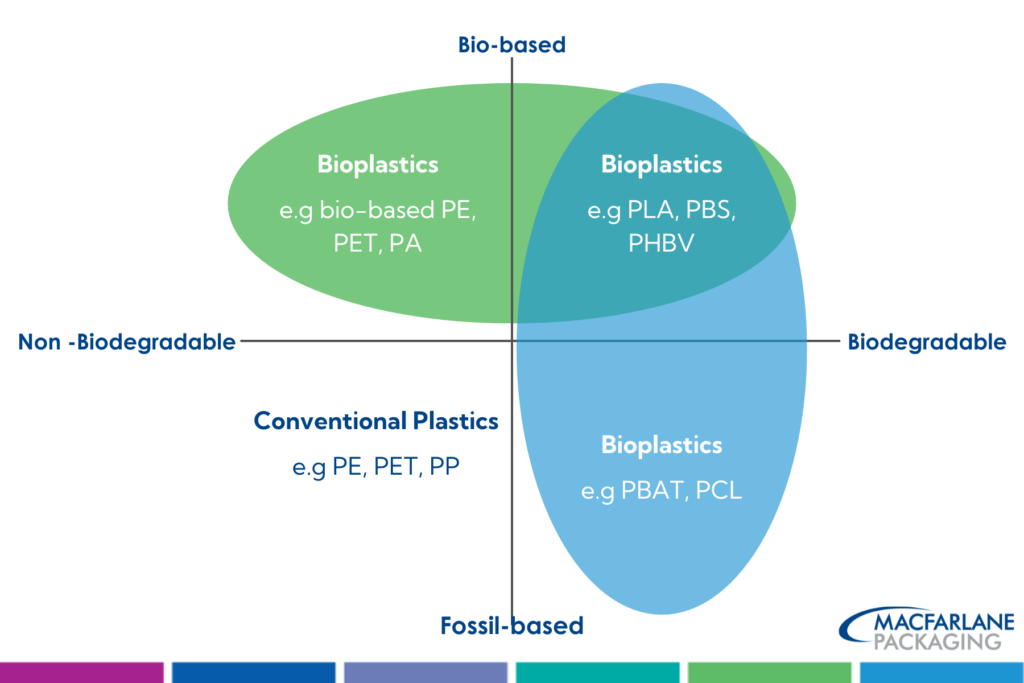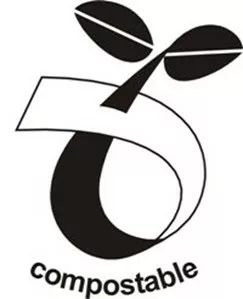Demystifying sustainability buzzwords: a sustainability glossary

In the world of eco-friendly packaging, there are lots of acronyms and words related to sustainability that need to be understood.
To help build a safer and more sustainable world, it’s worth taking the time to understand the jargon that’s out there.
We’ve compiled a handy sustainability glossary as a tool to demystify sustainability buzzwords and the terminology around eco-friendly packaging.
- 1.
- 2.
- 3.
- 4.
- 5.

Understanding sustainability and its importance
Sustainability is a crucial concept that plays a significant role in today’s world.
In the broadest sense, sustainability refers to the ability to maintain or support a process continuously over time. For most people and businesses, sustainability means saving natural resources and protecting the environment for future generations.
Within the subject of sustainability, there are lots of aspects to consider. These include environmental, social, and economic actions and their impact on the planet. And packaging plays a part in this too, as it can influence natural resources and impact the environment.
As we move towards a greener future, we all need to work together – businesses, people, and governments – to make it happen. One way to start is taking the time to understand sustainability buzzwords.
To support this, we have created a handy sustainability glossary. It demystifies key terms about eco-friendly packaging, recycling and general words related to sustainability.

Eco-friendly packaging glossary
Biodegradable – when something is labelled as biodegradable, it means it is capable of being broken down by the action of living things (such as microorganisms). Almost anything can biodegrade given time and the right conditions.
Biodegradable packaging – this is packaging that can biodegrade. Look closely at packaging labelled as biodegradable, particularly biodegradable plastic and bioplastics, as it can be a complex area. They are sometimes confused with oxo-degradable plastics, which are not the same.
Bioplastics – the definition of bioplastics differs depending on where you look. Bioplastics can be both bio-based and fossil-based. They can also be classed as biodegradable and non-biodegradable. Polymers that are made from biomass that can biodegrade are the most environmentally friendly choices. An example is polylactic acid (PLA) bioplastic.
The below illustration shows the complexities of bioplastics and their potential composition.

Compostable – compostable is used to describe a product that can disintegrate into non-toxic, natural elements.
Compostable packaging – this term refers to packaging products that are made from materials that decompose fully into compost without producing toxic residue as they break down. To be classified as compostable, packaging materials must meet specific criteria set out in European Standard EN 13432.
When packaging is labelled compostable, it is important to differentiate between industrially compostable and home compostable materials. Both types are held to different standards and should be labelled differently.
| Industrially Compostable | Home Compostable | |
| Biodegradation | Materials are tested for biodegradation at 58 °C +/- 2 °C, with carbon dioxide at least 90 % compared with control within 6 months. | Materials are tested for biodegradation at an ambient temperature (20-30°C), with carbon dioxide at least 90 % compared with control within 365 days. |
| Disintegration | Test for disintegration is performed at whatever temperatures are achieved in testing vessels. Vessels are at least 140 litres. After a maximum of 12 weeks no more than 10 % of original dry weight of test material should be > 2 mm. | Test for disintegration are performed at 20 – 30°C in vessels that have at least a140 litre capacity. After a maximum of 26 weeks no more than 10 % of original dry weight of test material should be > 2 mm. |
| Certification logo / labelling |  Din Certo | Vinçotte |
Eco-friendly packaging – this is packaging that is easy to recycle and made from materials manufactured using minimal impact on energy consumption or natural resources.
Extended Producer Responsibility (EPR) – EPR is a new signature piece of UK legislation that will see the full cost of managing household packaging waste shift from taxpayers to producers. Click here to learn more.
Oxo-degradable plastic – often confused with bioplastics, oxo-degradable plastic is conventional plastic mixed with an additive that makes it break down. Oxo-degradable plastic quickly fragments into smaller pieces called microplastics, which are harmful to the environment.
Packaging waste recovery notes (PRNs) – evidence to prove businesses have met the producer responsibility requirements of Packaging Waste Regulations in terms of quantities recycled.
Plastic Packaging Tax – the Plastic Packaging Tax is a piece of UK legislation that sees a levy applied to plastic packaging that contains less than 30% recycled content. The tax is paid per tonne of plastic packaging. Learn more here.
Returnable packaging – this refers to any packaging that can be used to return a product to where it is purchased from.
Reusable packaging – reusable packaging refers to any packaging material that can continuously be reused throughout a supply chain.
Sustainable packaging – the term that is used when referring to packaging that is developed and used to improve sustainability. This involves increased use of life cycle inventory (LCI) and life cycle assessment to help guide the use of packaging, which reduces the environmental impact and ecological footprint.

Recycling glossary
Business / commercial / industrial waste – this is rubbish produced by businesses of any kind from retail shops and restaurants through to markets, offices, factories, hotels and wholesalers.
Dry mixed recycling – this is dry recyclable material, typically consisting of plastic, cardboard, paper and glass. It’s often collected together and then taken to a facility to be sorted and processed in different waste streams.
General waste – this refers to waste that cannot be recycled. It usually covers materials such as non-recyclable plastics, food waste and wrappers.
Household waste – also known as domestic waste, this is rubbish generated by households and can include both general waste and recyclable waste.
Landfill – this refers to when unrecyclable waste and refuse is buried in excavated pits, which are usually covered with soil when full.
On-Pack Recycling Label (OPRL) – this is the name of a common recycling labelling scheme that provides simple, consistent labels for use on packaging. The labels clearly indicate whether packaging can be recycled or not. Learn more here.
Recycling – recycling is the process of converting waste into material that can then be reused. Its purpose is to prevent the waste of virgin resources, preserving natural resources and reducing pollution where possible.
Recyclable(s) – if something is labelled as recyclable, it is made from material that can be recycled through current recycling processes and processed into new products. Multiple materials that can be recycled may be called recyclables.
Recycled content – this refers to how much recycled material a product contains. The recycled content can be post-consumer or pre-consumer.
Virgin material – this refers to material that has been gathered from the environment in its natural, raw form. It has never been used before and is therefore “virgin”.
Waste streams – this refers to the flow of household waste or industrial waste through to final disposal or recycling. For example, the “paper waste stream” refers to the flow of paper / cardboard products through to recycling.

General sustainability, climate change and reporting glossary
Carbon footprint – this is the total amount of greenhouse gas emissions that are produced by an individual, organisation, event, product or service. These emissions are measured in units of carbon dioxide equivalent (CO2e), which reflects the amount of CO2 that would have the same warming effect as the other greenhouse gases emitted.
Carbon neutral – this refers to achieving a balance between the amount of carbon dioxide emitted and the amount removed from the atmosphere. If a business or process is labelled carbon neutral, it has no net release of carbon emissions into the atmosphere, often because of carbon offsetting.
Carbon offsetting – this is the action of compensating for carbon emissions by investing in or participating in schemes that make the equivalent reductions to carbon dioxide emissions in the atmosphere.
Circular economy – the circular economy is an economic model that aims to eliminate waste by keeping resources in use for as long as possible. It promotes the reuse, repair and recycling of products and materials, reducing the need for virgin resources and minimising environmental degradation.
Climate change – this phrase refers to the long-term shifts to our climate, including temperatures and weather patterns. While shifts can be natural, the term is largely used in relation to changes that are being driven by human activities, e.g. the effects of burning fossil fuels or using natural resources.
ESG – this acronym stands for Environmental, Social and Governance. Businesses often use it in relation to their sustainability strategy or reporting.
- Environmental: This focuses on a company’s impact on the environment, including its carbon emissions, waste management, energy consumption and natural resource usage. It also includes efforts to mitigate climate change and preserve biodiversity.
- Social: Social factors look at a company’s relationship with its employees, customers, suppliers and communities. It includes aspects such as employee welfare, diversity and inclusion, customer satisfaction, community engagement and human rights.
- Governance: Governance refers to a company’s internal policies, practices and structures that guide decision-making and ensure accountability. This includes board diversity, executive compensation, shareholder rights, ethical business practices and transparency.
Green supply chain management – green supply chain management involves integrating sustainability practices into every stage of the supply chain. This includes sourcing eco-friendly materials, reducing energy consumption, optimizing transportation routes and promoting ethical labour practices.
Net zero – net zero refers to a state where the amount of greenhouse gas emissions produced is equal to the amount of greenhouse gases removed from the atmosphere. This means that any emissions produced are offset by measures to remove or reduce them.
TCFD – this stands for Task Force on Climate-Related Financial Disclosures. They provide a set of recommendations for climate-related financial disclosures. The goal of TCFD is to provide transparency around risks and opportunities associated with climate change (e.g. carbon emissions), to allow investors, lenders and other financial institutions to assess them effectively.

Support with sustainable packaging
Hopefully, you found this sustainability glossary useful! Sustainably remains a nuanced and complex topic. Understanding words related to sustainability can help you make informed decisions about your packaging!
If you’re navigating your way around the complexities of sustainability and eco-friendly packaging, we’re here to help. Contact us today for more information about sustainable packaging swaps and carbon emissions reduction related to packaging.
